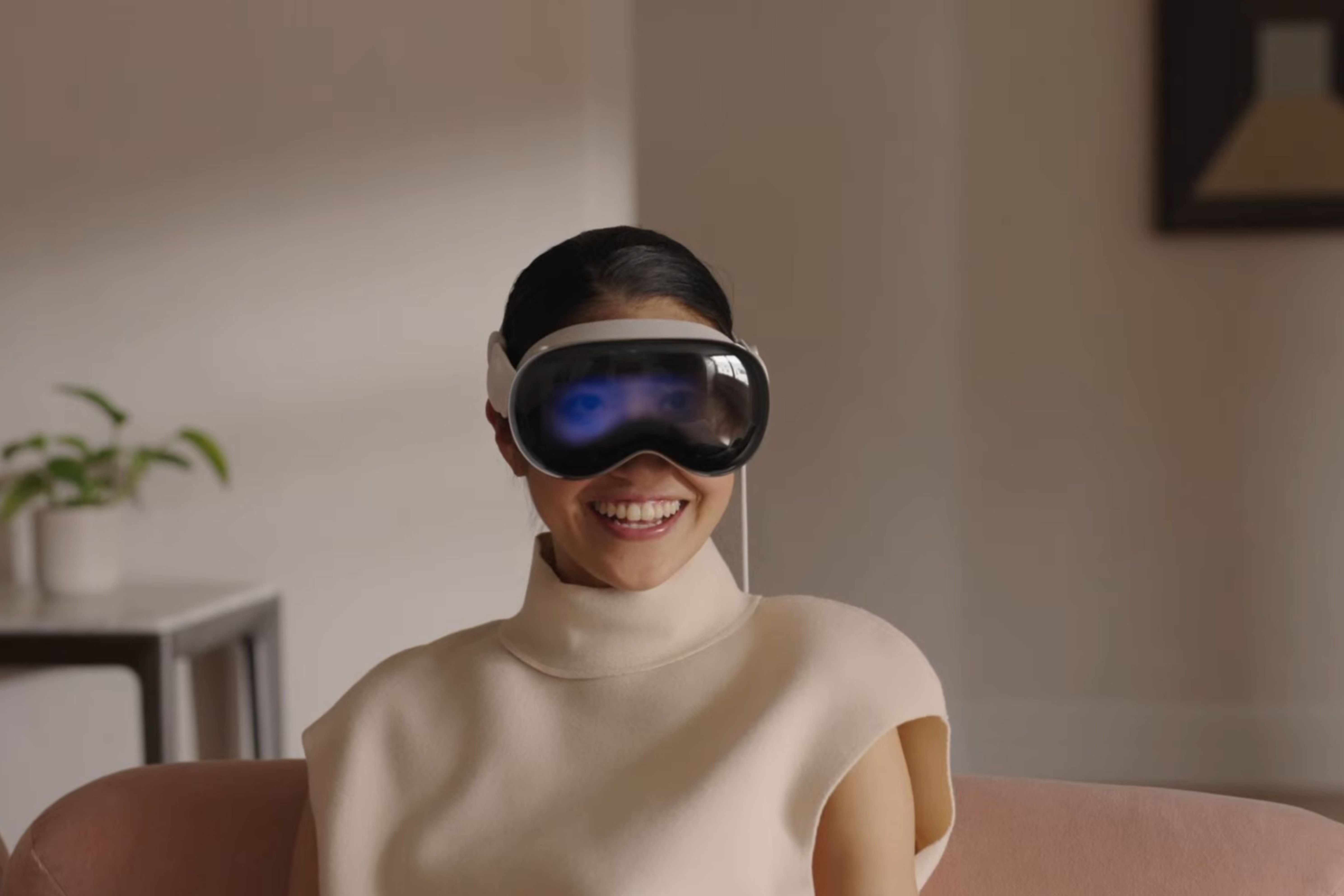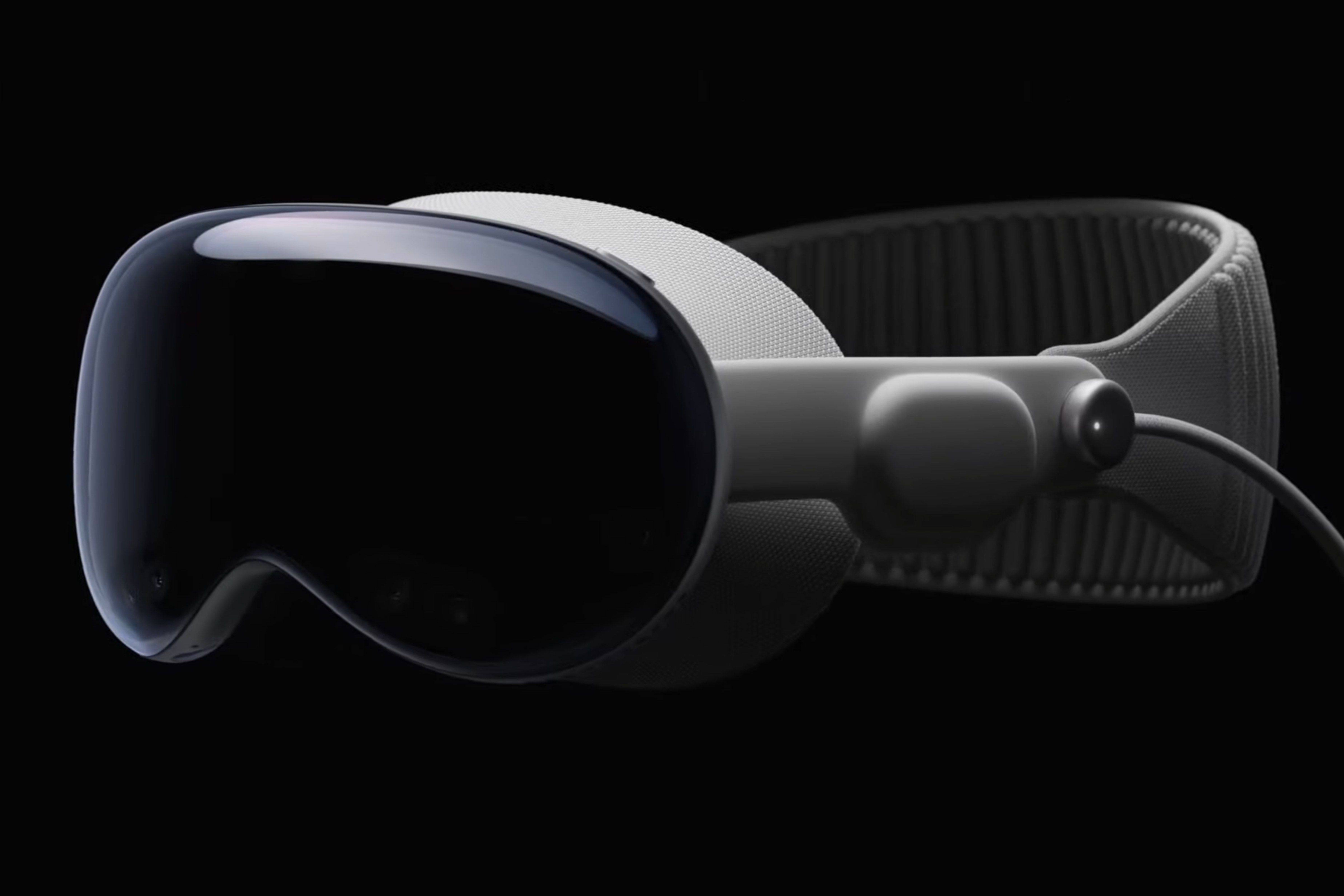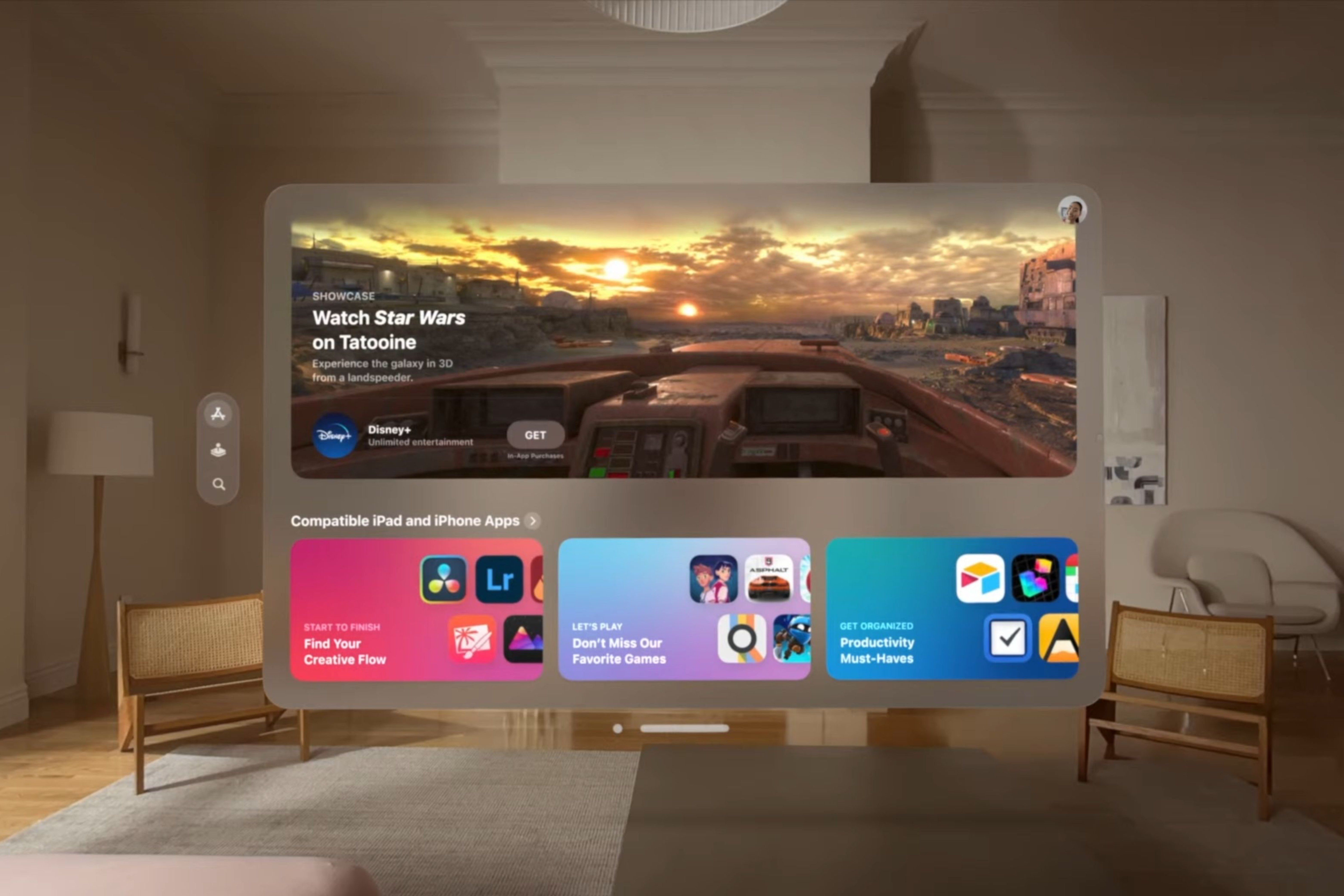Following years of leaks and rumors, Apple finally debuted its Vision Pro mixed-reality headset at WWDC, offering a user-experience that you look through instead of at. Vision Pro will be available starting early next year, retailing for $3,499, immediately making it one of the most expensive mixed-reality headsets on the market. Meta's most-comparable product, the Meta Quest Pro, is available for $999. Apple doesn't refer to Reality Pro as a headset, though, and instead prefers the term "spatial computer."
The headset looks similar to other AR and VR headsets that have been around for years, but in a unique format. Vision Pro runs on a fully three-dimensional interface that you can control with your hands, eyes, and voice. This new interface is overlaid on your existing surroundings, so you can still see the surrounding environment. Vision Pro's software also casts shadows on your environment, which appear around your windows. All told, it's an experience that resembles other Apple software, but in an augmented-reality format.
The headset's top features include Spatial Audio, Spatial Computing, and three-dimensional video capturing and watching. It's the company's first three-dimensional camera, which opens up a slew of new possibilities. Vision Pro is powered by a new form of software called visionOS, which is based on other forms of Apple software. Apps are not completely new, but instead reimagined in a way that supports Vision Pro's new user-interface and capabilities.
Vision Pro: A first look at the headset's design and tech specs
The Vision Pro is powered by the M2 chip, which packs a lot of performance and is silent. But it's also accompanied by a new R1 chip that processes and analyzes all the information coming through the sensors onboard Vision Pro. Apple says that R1 makes it so that Vision Pro has virtually no lag, and provides a completely immersive experience. That's important, because the company says that Vision Pro is designed for all-day use. The chip processes data from 12 cameras, five sensors, and six microphones.
But, Vision Pro does not have any form of internal battery. The headset comes with a battery pack that can power Vision Pro for two hours, and is designed to slide into your pocket. It can also be connected directly to a wall outlet, which makes all-day usage possible. Apple says that the decision to make the battery pack separate from the headset was made to ensure Vision Pro was compact and light.
Vision Pro has an ultra-high-resolution display system that features two displays that together provide 23 million pixels. These feature micro-OLED panels, which Apple says supports wide color and high dynamic range. Vision Pro can also be used by people that need glasses, as Apple has worked with ZEISS to create Optical Inserts for the headset.
The outside of the headset has a piece of laminated, polished glass that encloses the cameras and sensors used to create Apple's immersive experiences. This piece of glass connects to an aluminum frame and a Light Seal, which can block out as much of your environment as you'd like. Through a turn of the Digital Crown, which has previously appeared on the Apple Watch and AirPods Max, you can adjust how immersive an experience is. Aside from the Digital Crown, there is also another button on the top left of Vision Pro.
Sound is delivered through dual-driver audio pods, positioned near each ear, create what Apple calls the most-advanced Spatial Audio system ever. These audio pods adapt based on a user's environment, and Apple's Head Band features flexible straps that make sure the audio pods remain close to the wearer's ear.
visionOS on Vision Pro: Robust app support and all-new App Store
Aside from creating a three-dimensional interface that becomes a part of a user's surroundings, visionOS includes EyeSight. When a user is wearing Vision Pro, they can use EyeSight to connect with the people around them. As someone approaches the wearer of Vision Pro, the screen will become transparent. This lets the wearer see the person in front of them, and also shows the wearer's eyes. EyeSight can also display whether the user is in an immersive experience, which can help people around them determine whether they can see the surrounding environment.
visionOS has an all-new App Store on Vision Pro, but it is complimented by the large number of existing apps on Apple's other App Stores. The company says there will be hundreds of thousands of iPhone and iPad apps available on Vision Pro, offering a new type of experience. These applications can be scaled to sizes much larger than current Apple devices offer, and can be moved and positioned in augmented reality with ease.
Apple Vision Pro will be available early next year, retailing for $3,499. The ambitious mixed-reality headset will need to check a lot of boxes to be worth the high asking price.



